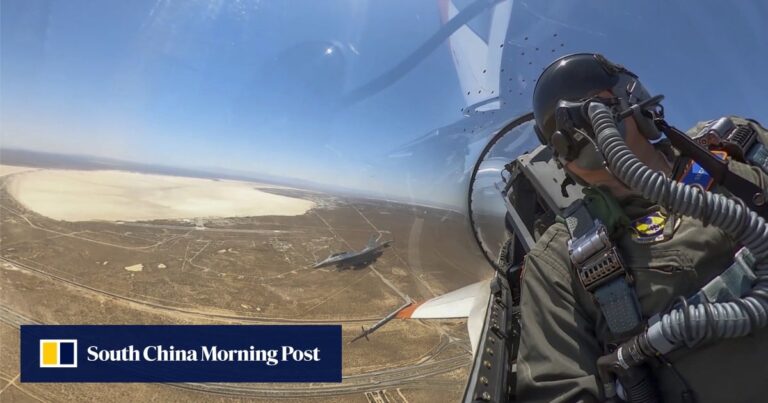“It was a pretty even battle” between AI fighters and human pilots with “2,000 or 3,000 hours of experience,” Kendall said Wednesday at the AI Expo event in Washington.
Chinese analysts say AI-controlled F-16s could give the US an advantage in future air battles given their superior maneuverability over human pilots, and the automated platform could reduce mid-air casualties. He said that it would also decrease.
But Fu Chenxiao, a Beijing-based military analyst, said that while an AI-controlled F-16 might “react faster” than a human pilot, the U.S. hopes to put the technology to use in actual air-to-air combat. He said there is a long way to go before it can be used.
The jet was able to self-pilot without any problems, but “extensive machine learning may be required for use in air-to-air combat,” Fu said.
Such learning includes things like air combat tactics, target analysis, and deciding whether to fire a weapon, which are “no easy task” for automated platforms.
“Especially in large-scale air combat, unlike one-on-one combat scenarios where the target is clear, letting unmanned aircraft make decisions on their own can lead to accidental damage,” Fu said.
“It will take time for existing fighter jets to learn this type of autonomous operation.”
Fu added that future air combat could be fought between these types of unmanned aircraft, and China is also developing technology in that area and testing it in ground-based simulators.
“We’re certainly working on it, but it won’t necessarily be used on existing modified fighters. We’ll probably develop new AI-driven unmanned fighters.”

Chinese military analyst Shao Yongling said the use of AI in future combat came after state media announced last month that the US had conducted the first known experimental “air combat” between human pilots and AI. He was quoted as saying that it had the potential to “transform the situation.” -Control Vista fighters in September.
The F-16 is the most widely used Western fighter aircraft class in the world, with more than 4,500 built since the 1970s.
China’s J-10 is a medium-sized single-engine multi-role fighter jet that is generally considered a rival to the F-16.
Hong Kong-based military analyst Leung Kwok-leung said: “The US is on the right path in developing an AI-controlled F-16 to explore new air combat capabilities, and China should pay close attention to this. should be paid.”
Although the technology is not yet perfected, the U.S. Air Force plans to have more than 1,000 unmanned fighter jets equipped with AI, and “the first aircraft will be operational by 2028,” according to the Associated Press. Reported.
Leung said it makes sense to test AI algorithms first on the highly maneuverable F-16. However, like Hu, he said China may develop AI-controlled unmanned combat aircraft through other routes rather than applying them to existing fighter jets.
Nie Lequong, a Shanghai-based military analyst, pointed to the possible impact on training costs.
“Pilot training is very expensive; [AI-enabled unmanned jets] “It will reduce human losses on the battlefield,” he said.

